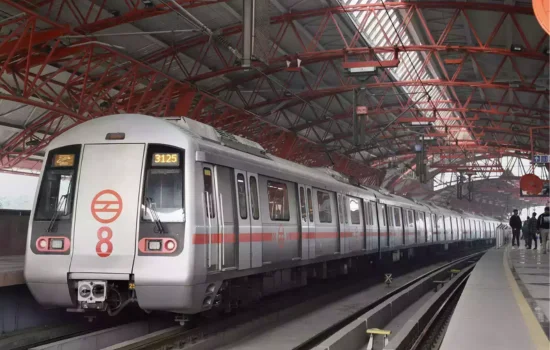India has achieved a historic milestone in its urban transportation journey, as the country’s metro rail network has expanded to over 1,000 kilometers, making it the third-largest metro system in the world. This achievement not only highlights India’s progress in urban mobility but also showcases its commitment to sustainable and efficient public transport solutions.
A Testament to Urban Transformation
The announcement, celebrated by government officials and urban planners alike, marks a significant step in India’s urban transformation. The metro network now spans across multiple major cities, including Delhi, Mumbai, Bengaluru, Chennai, Hyderabad, Kolkata, and newer additions like Lucknow, Jaipur, and Kochi. This extensive coverage reflects the growing need for dependable public transport in India’s rapidly urbanizing landscape.
Union Minister for Housing and Urban Affairs, Hardeep Singh Puri, hailed the milestone as a “proud moment for the nation” and emphasized the government’s vision for expanding metro connectivity to every urban cluster with a population of over one million.
“The 1,000-km mark is not just a number; it is a testament to India’s commitment to creating world-class infrastructure and providing its citizens with better mobility options,” Puri stated.
Rapid Growth of India’s Metro Network

India’s journey to the 1,000-km milestone has been nothing short of remarkable. The country’s first metro service, the Kolkata Metro, began operations in 1984. However, the significant expansion of metro networks occurred in the past two decades, with the Delhi Metro leading the way in setting new benchmarks for efficiency, safety, and connectivity.
The pace of expansion has accelerated in recent years, driven by government initiatives, public-private partnerships, and advancements in construction technology. From elevated tracks to underground corridors, India’s metro projects have overcome complex challenges, including land acquisition, high population density, and diverse geographical terrains.
Global Recognition and Rankings
With its metro network surpassing 1,000 kilometers, India now ranks third globally, behind China and the United States. This achievement places India on the map as a leader in sustainable urban transportation, bridging the gap between densely populated areas and key economic hubs.
The Delhi Metro, which alone accounts for over 390 kilometers of the total network, has earned international recognition for its operational efficiency and eco-friendly practices. Other metro systems, such as the Bengaluru Metro and Hyderabad Metro, have also received accolades for their innovative designs and seamless integration with urban infrastructure.
Economic and Environmental Benefits
The expansion of the metro network has had a profound impact on India’s urban economy. By providing a fast, affordable, and reliable mode of transport, metros have reduced travel time, boosted productivity, and enhanced connectivity for millions of commuters. The ripple effects are evident in the growth of real estate, retail, and commercial spaces near metro corridors.
Environmentally, metros have played a crucial role in reducing air pollution and carbon emissions. With more people opting for metro services over private vehicles, cities have seen a significant decrease in traffic congestion and vehicular pollution. The government’s push for energy-efficient metro systems, including the use of solar power and regenerative braking technology, further underscores its commitment to green mobility.
Challenges and the Road Ahead
While the achievement is commendable, India’s metro journey is not without challenges. Funding, project delays, and integration with existing public transport systems remain pressing issues. Additionally, ensuring last-mile connectivity to metro stations continues to be a critical factor in maximizing ridership.
To address these challenges, the government has outlined plans to invest in feeder bus services, non-motorized transport options, and innovative technologies like driverless trains and smart ticketing systems. Expanding the network to smaller cities and towns is also a priority, as metros are seen as vital to improving the quality of life and boosting regional economies.
Public Reactions and Future Aspirations
The milestone has been met with widespread applause from citizens, who view the metro as a game-changer in their daily lives. Social media has been abuzz with stories of how metros have transformed commuting experiences, especially for working professionals and students.
Looking ahead, India aims to double its metro network in the next decade, with several ambitious projects already in the pipeline. Cities like Patna, Kanpur, and Surat are preparing to launch their metro services, while existing networks are being extended to accommodate growing populations.
Conclusion
India’s metro network crossing the 1,000-kilometer mark is a proud moment that reflects the nation’s commitment to modernization and sustainability. As the third-largest metro system in the world, it stands as a symbol of India’s ability to meet the demands of its rapidly urbanizing population while addressing environmental and economic challenges. With continued investments and innovation, India’s metros are set to play an even greater role in shaping the future of urban transportation, ensuring that the country moves forward efficiently and sustainably.